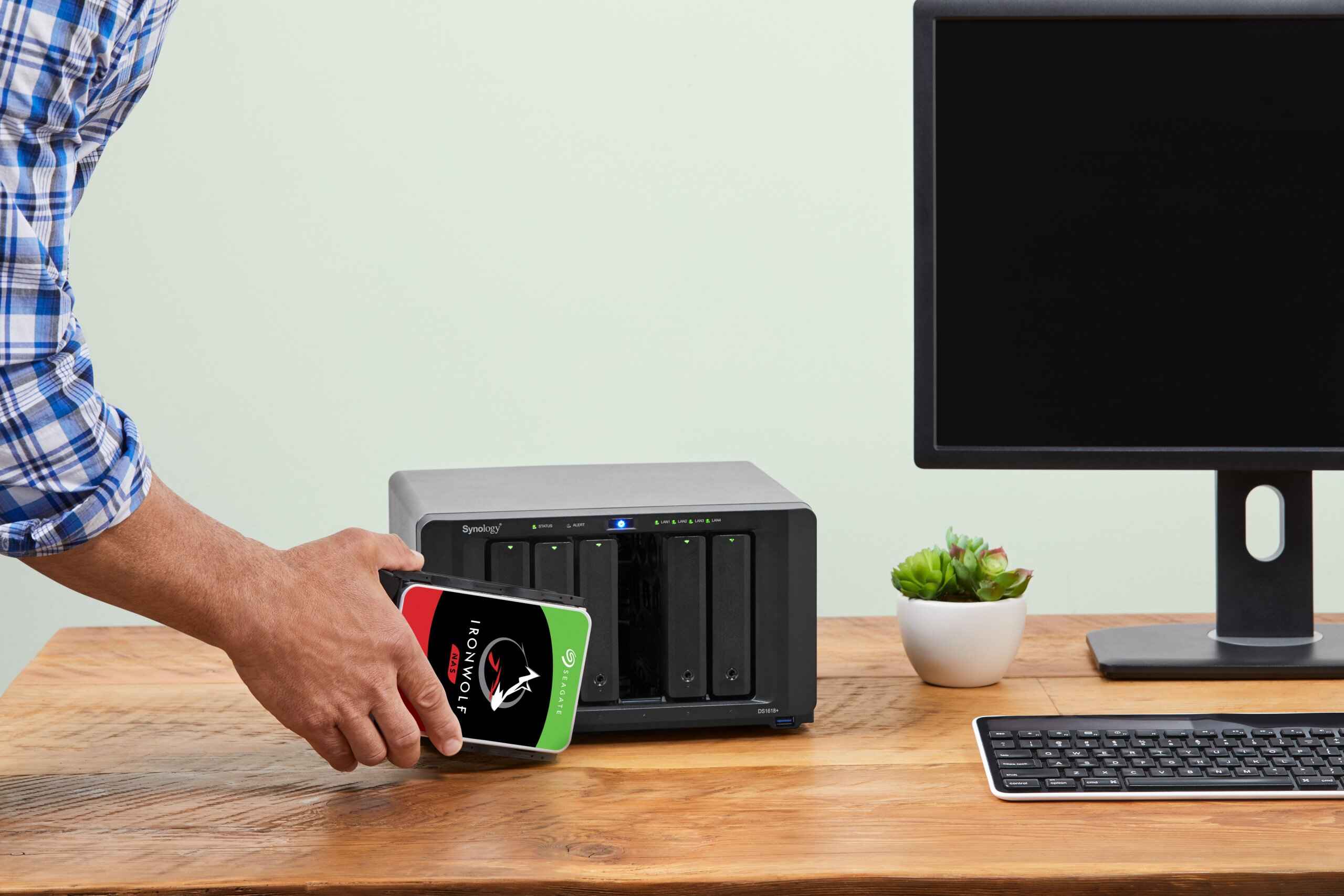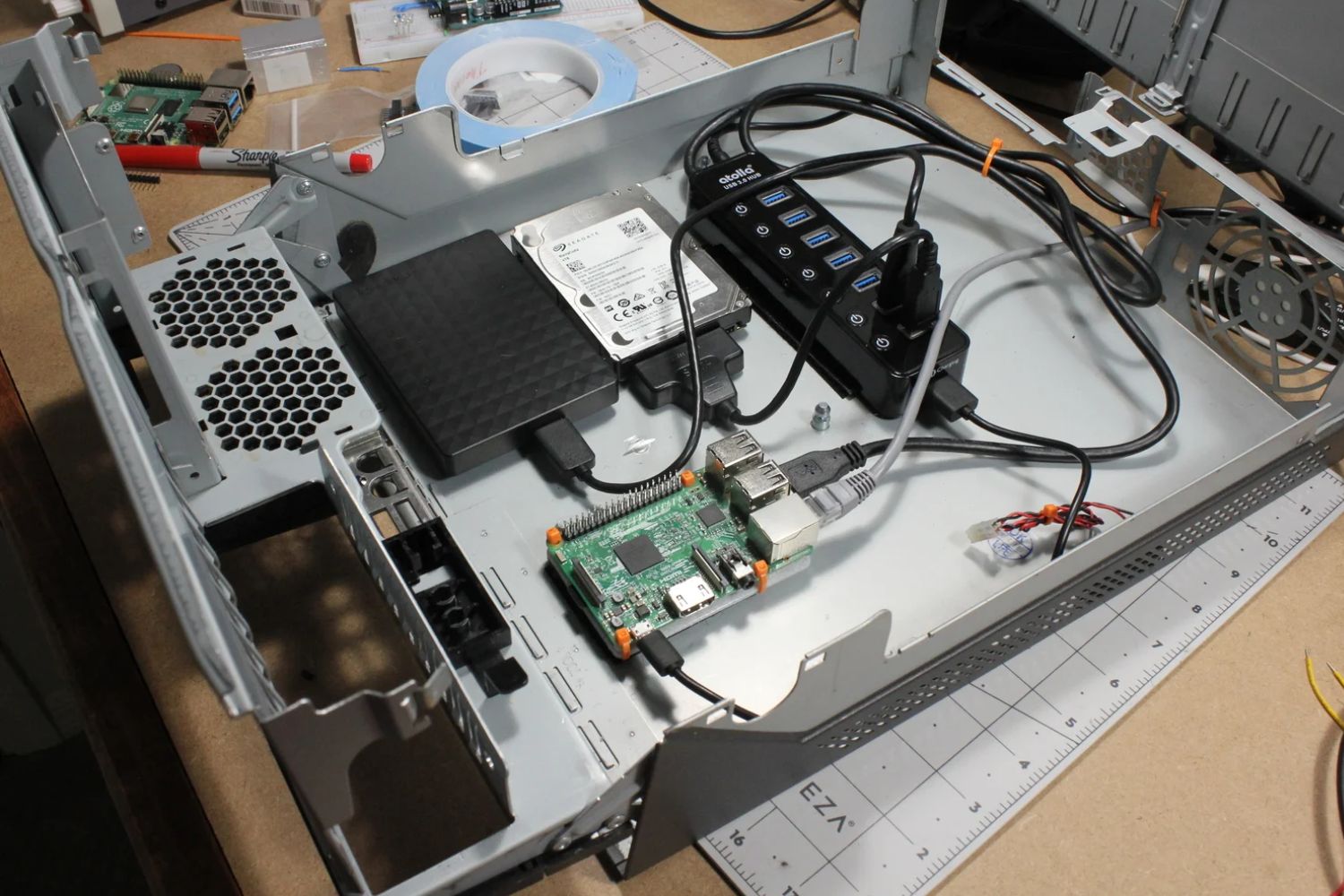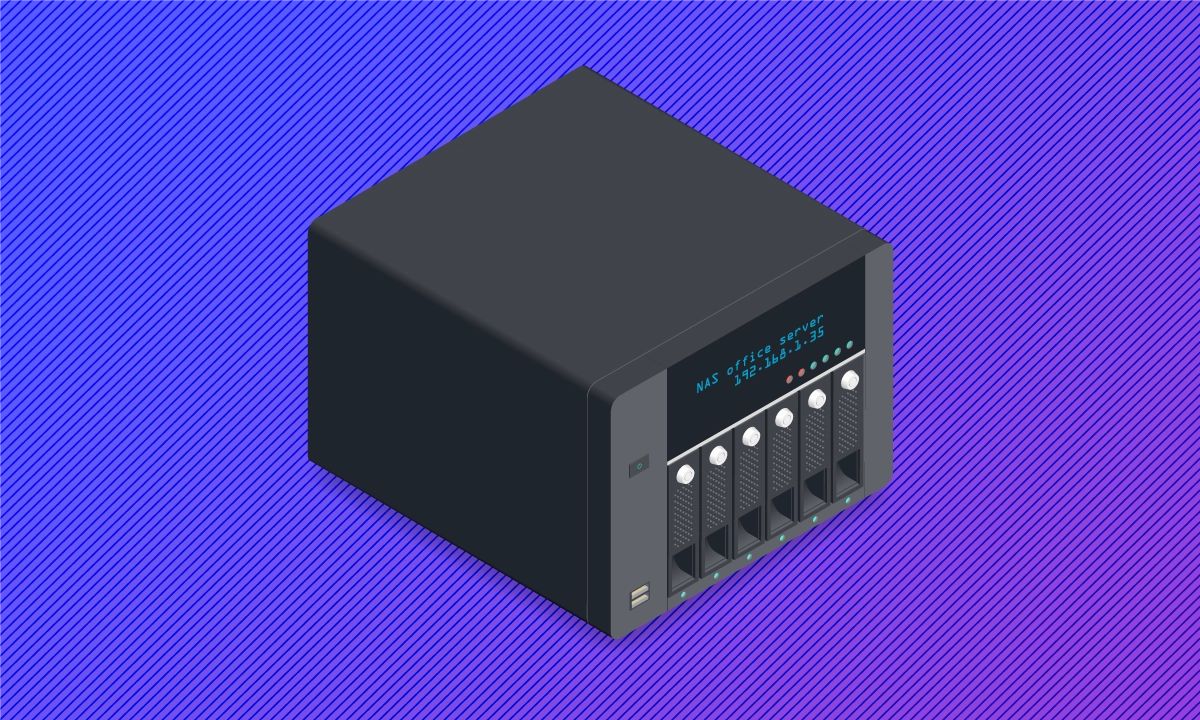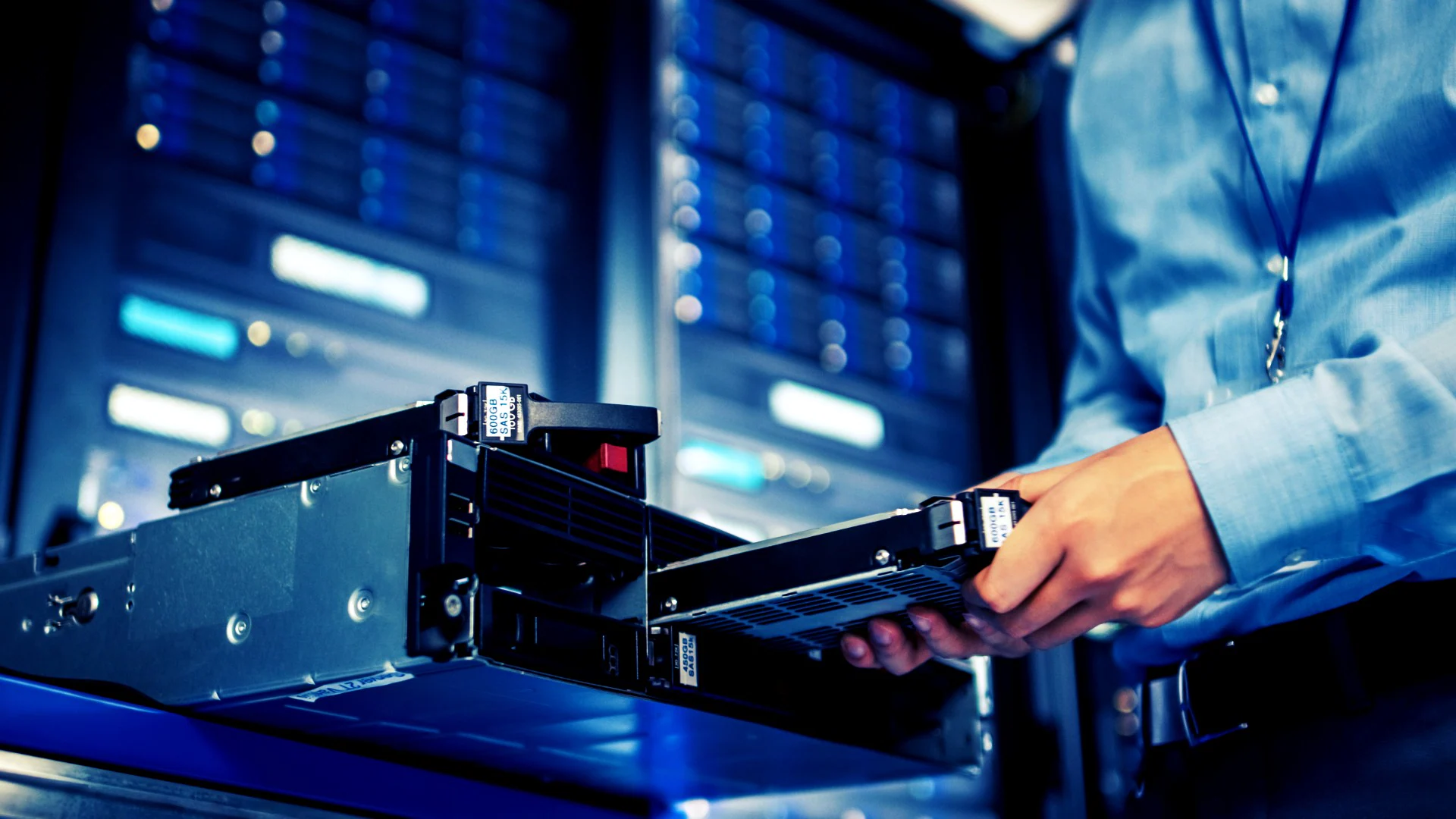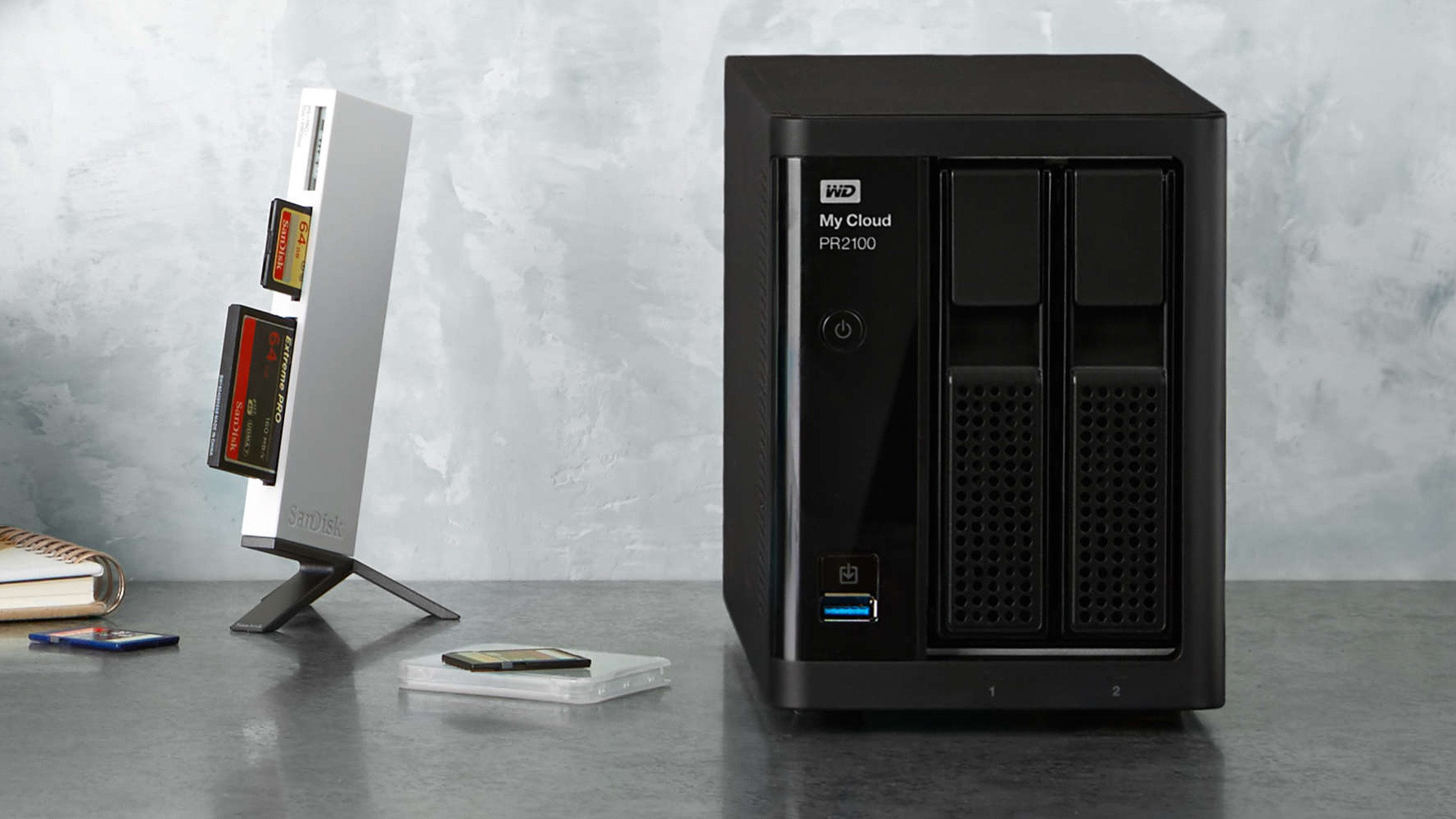**
Introduction
**
Network Attached Storage (NAS) is a vital component in today's digital landscape, offering individuals and businesses a secure and efficient means of storing, accessing, and managing data. As data consumption continues to surge, the need for reliable storage solutions becomes increasingly pronounced. NAS serves as a dedicated file storage device that provides local and remote access to a diverse array of clients. It operates on the principle of data sharing, enabling multiple users to access files from a centralized location. This article delves into the intricacies of NAS, elucidating its functionality, benefits, and considerations for deployment.
The ubiquity of digital content, ranging from multimedia files to critical business documents, necessitates a robust storage infrastructure. NAS caters to this demand by furnishing a centralized repository for data, allowing for seamless access and management. Whether it's a small-scale home network or a large enterprise environment, NAS offers scalable solutions to accommodate varying storage requirements.
As we delve into the realm of NAS, it's essential to comprehend its underlying architecture, operational mechanisms, and the diverse array of options available. From the convenience of remote access to the security of data redundancy, NAS presents a plethora of advantages that cater to the modern user's needs. Understanding the nuances of NAS empowers users to make informed decisions regarding its implementation, ensuring optimal performance and data integrity.
In the subsequent sections, we will explore the core concepts of NAS, including its operational framework, benefits, types, and considerations for deployment. By delving into these facets, readers will gain a comprehensive understanding of NAS and its pivotal role in modern data management. Let's embark on a journey to unravel the intricacies of NAS and harness its potential to streamline data storage and accessibility.
What Is Network Attached Storage (NAS)?
Network Attached Storage (NAS) is a dedicated file storage device that provides local and remote access to a diverse array of clients. It operates as a centralized repository for data, facilitating seamless sharing and retrieval of files across a network. NAS systems are equipped with their own operating system and file management capabilities, rendering them independent of other servers or computers. This autonomy enables NAS to function as a standalone storage solution, offering unparalleled accessibility and data management functionalities.
At its core, NAS serves as a specialized server designed for file storage and retrieval. It is optimized for data sharing among multiple users and devices, fostering collaborative workflows and streamlined access to critical information. NAS devices are equipped with built-in security features, ensuring the integrity and confidentiality of stored data. Moreover, they offer the flexibility of remote access, empowering users to retrieve files from anywhere with an internet connection.
One of the defining characteristics of NAS is its user-friendly interface, which simplifies the process of configuring and managing the storage system. This accessibility makes NAS an ideal solution for home users, small businesses, and large enterprises alike. Additionally, NAS systems can be tailored to suit specific storage requirements, with options for scaling storage capacities and implementing data redundancy measures.
NAS devices are equipped with multiple drive bays, allowing for the installation of multiple hard drives that can be configured to suit the user's storage needs. This flexibility enables users to expand storage capacities as their data requirements evolve, without necessitating a complete overhaul of the storage infrastructure. Furthermore, NAS supports various RAID configurations, enhancing data protection and fault tolerance.
In essence, NAS represents a versatile and efficient solution for storing, managing, and accessing data across diverse network environments. Its user-friendly interface, robust security features, and scalability make it an indispensable asset for individuals and organizations seeking reliable and accessible storage solutions.
Benefits of Network Attached Storage
Network Attached Storage (NAS) offers a myriad of benefits that cater to the evolving data storage and management needs of individuals and organizations. By harnessing the capabilities of NAS, users can unlock a host of advantages that streamline data accessibility, enhance collaboration, and fortify data security.
Enhanced Data Accessibility: NAS empowers users to access their files from anywhere with an internet connection, facilitating seamless collaboration and remote work capabilities. This accessibility eliminates the constraints imposed by traditional storage solutions, enabling users to retrieve and share data effortlessly.
Centralized Data Management: NAS serves as a centralized repository for data, consolidating files from multiple devices and users into a unified storage platform. This centralized approach simplifies data management, ensuring that critical information is organized and readily accessible.
Data Redundancy and Protection: NAS supports various RAID configurations, enabling users to implement data redundancy measures that safeguard against data loss due to hardware failures. This redundancy fortifies data integrity and ensures continuity in the event of drive failures.
Scalability: NAS systems are designed to accommodate evolving storage requirements, offering the flexibility to scale storage capacities as needed. This scalability empowers users to expand their storage infrastructure without disrupting existing workflows or incurring substantial costs.
Streamlined Backup and Recovery: NAS facilitates automated backup processes, allowing users to schedule regular backups of critical data. In the event of data loss or corruption, NAS expedites the recovery process, minimizing downtime and preserving data integrity.
Cost-Effective Storage Solutions: NAS presents a cost-effective alternative to traditional server-based storage solutions, offering comparable functionalities at a fraction of the cost. This affordability makes NAS an attractive option for small businesses and home users seeking robust storage solutions without exorbitant expenses.
Efficient Media Streaming: NAS systems are equipped to stream multimedia content to various devices, serving as a centralized media server for seamless entertainment experiences. This capability enhances the entertainment value of NAS, transforming it into a versatile multimedia hub.
Data Security: NAS devices are fortified with robust security features, including user access controls, encryption, and remote access authentication. These security measures bolster data confidentiality and integrity, mitigating the risk of unauthorized access or data breaches.
By harnessing the diverse benefits of NAS, users can optimize their data management workflows, fortify data security, and streamline accessibility, thereby enhancing productivity and operational efficiency.
How Network Attached Storage Works
Network Attached Storage (NAS) operates on a client-server model, wherein the NAS device serves as a dedicated file server that provides data storage and retrieval functionalities to client devices connected to the network. The fundamental mechanism of NAS involves the seamless sharing and access of files across the network, facilitated by the robust capabilities of the NAS system.
Upon deployment, the NAS device is integrated into the existing network infrastructure, establishing connectivity with client devices such as computers, laptops, smartphones, and tablets. This connectivity enables users to access the NAS storage from their respective devices, fostering collaborative workflows and streamlined data sharing.
At the heart of NAS functionality lies the embedded operating system, which governs the storage management, file sharing, and access control features of the NAS device. This operating system enables users to configure the storage system, create user accounts, define access permissions, and manage data backups, all through an intuitive and user-friendly interface.
NAS systems are equipped with multiple drive bays, allowing for the installation of hard drives that collectively constitute the storage capacity of the NAS device. These drives can be configured in various RAID setups, such as RAID 0, RAID 1, RAID 5, or RAID 10, depending on the user’s redundancy and performance requirements. The RAID configuration enhances data protection and fault tolerance, ensuring data integrity in the face of hardware failures.
Upon accessing the NAS storage, users can upload, download, modify, and delete files based on their access permissions. The NAS device facilitates seamless file sharing and collaboration, allowing multiple users to interact with the stored data concurrently. Furthermore, NAS supports the creation of shared folders, enabling users to organize and categorize files for streamlined accessibility.
Remote access is a pivotal feature of NAS, enabling users to retrieve files from the NAS storage over the internet. This capability empowers users to access their data from anywhere, fostering remote work capabilities and ensuring uninterrupted access to critical information.
In essence, NAS functions as a centralized file server that harmonizes data storage, access, and management across diverse network environments. Its user-friendly interface, robust security features, and scalability make it an indispensable asset for individuals and organizations seeking reliable and accessible storage solutions.
Types of Network Attached Storage
Network Attached Storage (NAS) encompasses a diverse range of devices tailored to cater to varied storage requirements, performance benchmarks, and deployment scenarios. Understanding the different types of NAS systems is essential for aligning the storage solution with specific user needs and network environments.
Entry-Level NAS: Entry-level NAS devices are designed for home users and small businesses, offering basic storage functionalities with a focus on affordability and ease of use. These devices typically feature a limited number of drive bays and are optimized for personal file storage, media streaming, and backup purposes.
Mid-Range NAS: Mid-range NAS systems are engineered to accommodate the demands of small to medium-sized businesses, providing enhanced storage capacities, improved processing power, and advanced data management features. These devices are suitable for collaborative work environments and serve as centralized repositories for critical business data.
Enterprise-Class NAS: Enterprise-class NAS solutions are engineered to deliver unparalleled performance, scalability, and data redundancy capabilities to large organizations and data-intensive applications. These high-end NAS systems feature robust hardware specifications, advanced data protection mechanisms, and comprehensive management features tailored to enterprise-grade storage requirements.
Rackmount NAS: Rackmount NAS devices are designed to be mounted in standard server racks, offering a space-efficient and scalable storage solution for data centers and enterprise environments. These devices are optimized for high-density storage configurations, facilitating seamless integration into existing server infrastructure.
Desktop NAS: Desktop NAS systems are compact, standalone devices that cater to the storage needs of home users, small offices, and remote work setups. These devices offer a space-saving form factor and user-friendly setup, making them ideal for personal file storage, media streaming, and backup applications.
Prosumer NAS: Prosumer NAS devices bridge the gap between consumer-grade and professional-grade storage solutions, offering advanced features and performance capabilities suited for enthusiasts, content creators, and small businesses with demanding storage requirements. These devices strike a balance between affordability and robust functionality, catering to users with diverse storage needs.
By exploring the diverse types of NAS systems, users can identify the most suitable solution that aligns with their storage requirements, performance expectations, and budgetary constraints. Whether it’s a compact desktop NAS for personal use or an enterprise-class NAS for large-scale data management, the versatility of NAS ensures that there’s a solution tailored to every user’s needs.
Considerations When Choosing a Network Attached Storage
When evaluating Network Attached Storage (NAS) solutions, several key considerations come into play to ensure that the chosen system aligns with the user’s storage requirements, performance expectations, and operational needs. By taking these factors into account, users can make informed decisions that optimize data management workflows and maximize the utility of the NAS system.
Storage Capacity and Scalability: Assessing the required storage capacity and considering future scalability needs is pivotal when selecting a NAS system. Understanding the volume of data to be stored and the potential for storage expansion enables users to choose a system that accommodates their present and future storage requirements.
Performance Requirements: Users should evaluate the performance benchmarks of NAS systems, including data transfer speeds, processing power, and support for concurrent users. This assessment ensures that the chosen NAS system delivers the requisite performance for seamless data access and sharing across the network.
Data Redundancy and Protection: Considering the importance of data integrity, users should prioritize NAS systems that offer robust data redundancy features, such as support for RAID configurations and automated backup capabilities. These features fortify data protection and ensure continuity in the event of hardware failures.
Scalability and Expansion Options: NAS systems with flexible expansion options, such as additional drive bays, support for external storage devices, and compatibility with expansion units, provide users with the flexibility to scale their storage infrastructure as their data requirements evolve.
Remote Access Capabilities: Assessing the remote access features of NAS systems is crucial for users who require seamless access to their data from anywhere. Remote access functionalities enable users to retrieve, share, and manage files over the internet, fostering remote work capabilities and uninterrupted data accessibility.
Data Management Features: Evaluating the data management capabilities of NAS systems, including file organization, access controls, and backup functionalities, ensures that the chosen system aligns with the user’s data management workflows and regulatory compliance requirements.
Integration with Existing Infrastructure: Compatibility with existing network infrastructure, including support for network protocols, operating systems, and third-party applications, is a key consideration when choosing a NAS system. Seamless integration minimizes deployment complexities and ensures interoperability with existing IT environments.
Security Features: Prioritizing NAS systems equipped with robust security features, such as data encryption, user access controls, and authentication mechanisms, is essential for safeguarding data against unauthorized access and potential security threats.
Support and Maintenance: Assessing the availability of technical support, firmware updates, and warranty coverage for NAS systems is crucial for ensuring ongoing reliability and performance. Users should consider the support infrastructure offered by NAS manufacturers and the availability of community resources for troubleshooting and maintenance.
By carefully considering these factors, users can navigate the diverse landscape of NAS solutions and identify the system that best addresses their storage requirements, performance expectations, and operational considerations. This informed approach ensures that the chosen NAS system seamlessly integrates into the user’s environment, empowering them to harness the full potential of network-attached storage.
Setting Up a Network Attached Storage
The process of setting up a Network Attached Storage (NAS) system entails several key steps aimed at configuring the device, integrating it into the existing network infrastructure, and optimizing its functionalities to suit the user’s storage requirements. By following these steps, users can seamlessly deploy a NAS system and leverage its capabilities for efficient data management and accessibility.
Hardware Installation: Begin by physically installing the NAS device in a suitable location, ensuring adequate ventilation and access to power and network connectivity. Insert the hard drives into the drive bays as per the manufacturer’s guidelines, taking care to secure them properly and make the necessary connections.
Network Integration: Connect the NAS device to the local area network (LAN) using an Ethernet cable or through a wireless connection, depending on the device’s networking capabilities. Ensure that the NAS is assigned an appropriate IP address and is accessible within the network.
Initial Configuration: Access the NAS device’s management interface using a web browser or dedicated software provided by the manufacturer. Follow the initial setup wizard to configure basic settings such as language preferences, time zone, and administrative credentials.
Storage Configuration: Configure the storage settings of the NAS, including the RAID configuration, volume setup, and allocation of storage space to specific purposes such as data storage, backups, and media streaming. Customize the storage configuration based on the user’s redundancy and performance requirements.
User and Access Management: Create user accounts and define access permissions to regulate user access to the NAS storage. Implement security measures such as password policies, user groups, and access controls to safeguard data and ensure compliance with privacy regulations.
Data Backup and Synchronization: Set up automated backup tasks to safeguard critical data and ensure data integrity. Configure synchronization options to replicate data to external storage devices or cloud services for additional redundancy and off-site backup capabilities.
Remote Access Setup: Enable remote access features to facilitate seamless access to the NAS storage from outside the local network. Configure secure remote access protocols and authentication mechanisms to ensure data security during remote connections.
Integration with Applications and Services: Integrate the NAS system with relevant applications and services, such as media servers, file sharing platforms, and backup utilities, to enhance its utility and interoperability within the user’s environment.
Testing and Optimization: Conduct thorough testing of the NAS system to ensure that data access, file sharing, and backup processes operate as intended. Optimize the system settings based on performance benchmarks and user feedback to maximize its efficiency.
Documentation and Training: Document the NAS system’s configuration, settings, and maintenance procedures for future reference. Provide training to users on accessing and utilizing the NAS system effectively, emphasizing best practices for data management and security.
By meticulously following these steps, users can successfully set up a Network Attached Storage system, harnessing its capabilities to streamline data management, enhance accessibility, and fortify data protection within their network environment.
Conclusion
Network Attached Storage (NAS) stands as a cornerstone of modern data management, offering an array of benefits and functionalities that cater to the diverse storage needs of individuals and organizations. From its role as a centralized file server to its seamless remote access capabilities, NAS systems have revolutionized the landscape of data storage and accessibility.
By delving into the intricacies of NAS, users gain a comprehensive understanding of its operational framework, benefits, types, and considerations for deployment. The versatility of NAS is exemplified through its ability to scale from entry-level solutions tailored for home users to enterprise-class systems designed to meet the rigorous demands of large organizations.
As users navigate the process of choosing, setting up, and optimizing a NAS system, they are empowered to tailor the storage solution to their specific requirements, performance expectations, and operational considerations. The considerations outlined in this article serve as a guiding framework for users to make informed decisions that align with their storage needs and network environments.
In essence, NAS epitomizes the convergence of accessibility, security, and scalability in the realm of data storage. Its seamless integration into network environments, coupled with its robust data protection mechanisms and user-friendly interfaces, positions NAS as an indispensable asset for streamlining data management workflows and fortifying data integrity.
As the digital landscape continues to evolve, the role of NAS in facilitating collaborative work environments, enabling remote access, and fortifying data security becomes increasingly pronounced. By embracing the capabilities of NAS, users can unlock a storage solution that not only meets their present needs but also accommodates future growth and technological advancements.
In conclusion, the journey through the realm of NAS unveils a versatile and efficient storage solution that harmonizes data accessibility, security, and scalability. By harnessing the capabilities of NAS, users embark on a path towards optimized data management, streamlined accessibility, and fortified data protection, thereby empowering them to navigate the complexities of modern data storage with confidence and efficiency.







